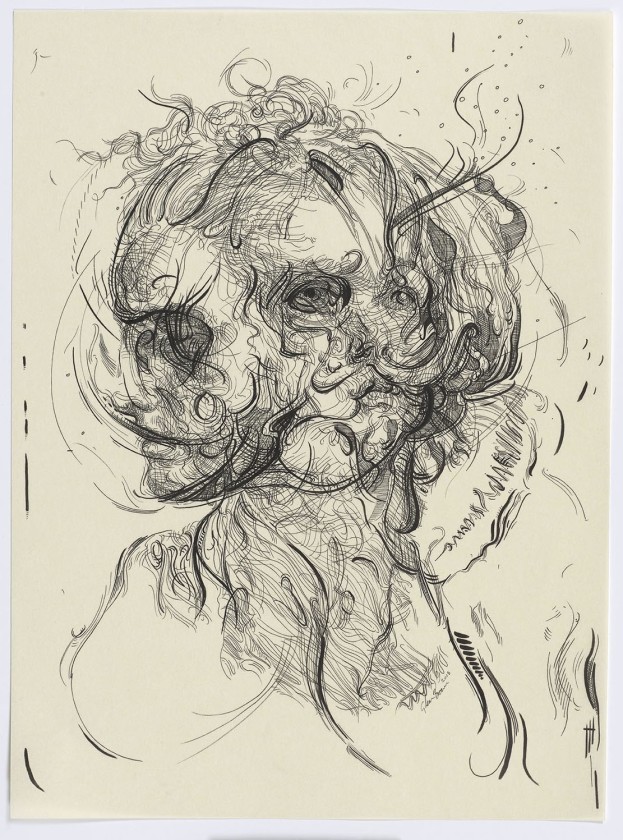Collateral Drawing: UCS Waterfront Building, Ipswich, Suffolk
Featured artists: Biggs & Collings, Kayle Brandon, Glenn Brown, Gillian Carnegie, Graham Crowley, Bella Easton, Stephen Felmingham, Ryan Gander, Chris Hawtin, Julian Perry, Rebecca and Mike, John Stark, Mike Stubbs, Trisant, Daphne Warburg Astor and Richard Wathen.
There’s more to an artwork than its finished state, but exhibitions concentrate on that, along perhaps with preparatory studies which act as preliminary versions of that state. Yet there may be any number of by-products from the making of an artwork, and that is what Collateral Drawing explores. These may take such forms as the stage setting, models or constructions which are created in order to facilitate the work itself; the redefinition of past work as collateral to a future work in which it is repurposed; various means of recycling aspects of a practice; or the marks which result – serendipitously, but with a more than accidental logic – from the production itself.
Every artist has their own unique working method that habitually causes repetitive marks to be inflicted onto or altering their working surroundings. Whether dripped, scratched, taped, cut, erased, smeared, hammered: all are repetitive and typically unguarded instances of the process of drawing. The wall, floor or table acts as a raw surface and means to capture these on-going activities that the artist ritualistically performs; the remains of the method left behind is as familiar as it is often taken for granted in an artist’s practice and is rarely publicly exposed. These work surfaces are an integral part and an extension of the drawing process, which are then discarded, or severed from the artwork. They hold a fascination of their own: not just as a documentation of the artist’s creative process, but as an informative insight into the relationship between what is subconscious and conscious in the artist’s drawing practice.
Collateral Drawing East Anglia explores the relationship between finished works and the collateral drawing which fed into or resulted from their making in the work of sixteen artists with an East Anglian connection - Each artist was approached by the curators six months in advance and asked to retain the collateral elements of some new work by isolating or documenting elements of their working environment, as a means to record the artists’ subconscious actions around their day-to-day creativity. These elements were then carefully collated and presented alongside an artwork that the artist produced alongside them during this period.
The Collateral Drawing Series was launched at Plymouth College of Art in February 2014, with the aim to travel around academic and public venues, exploring the central concept through an evolving selection of artists. Since an Anglo - Greek collaboration between six artists took place in Athens in May 2014 and an Anglo - German version between ten artists in Berlin in September 2015.
Waterfront Gallery
UCS Waterfront Building, Neptune Quay
Ipswich, Suffolk
